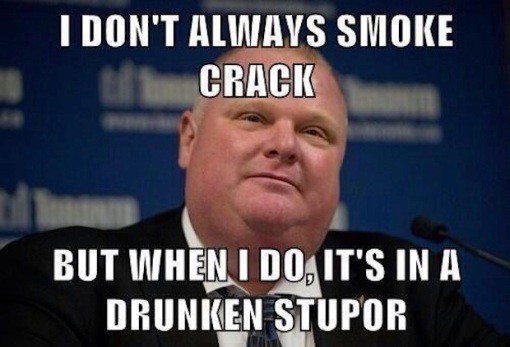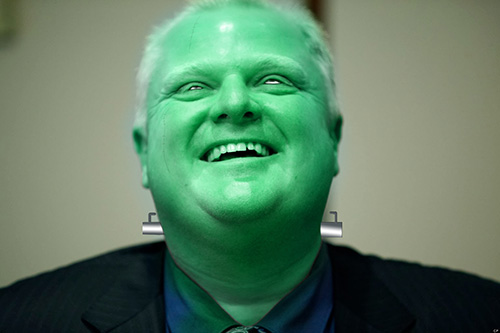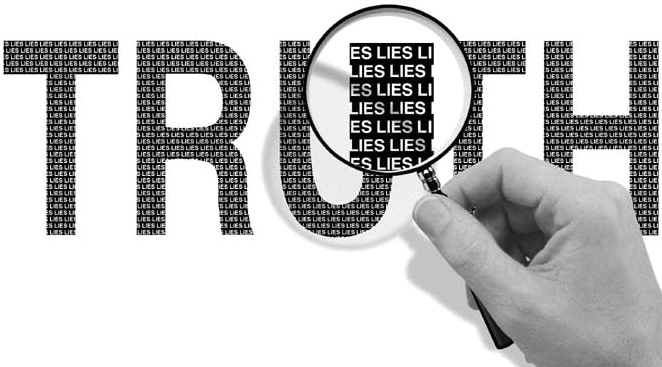[see also: “Can we please stop assuming that marijuana is harmful to young people?“]
The “simplest” accurate description of the effects of marijuana in humans is that it modulates the regulation of homeostasis. Homeostasis is what Goldilocks seeks in the children’s story: not too hot; not too cold; just right. More than just heat and cold, the human body contains many systems which must be held in relative balance. The balance between inhibition and excitation, bone formation and resorption, inflammatory/anti-inflammatory signalling, fat storage and release, blood sugar, blood pressure, hormone levels; all these systems are held in balance by the endocannabinoid system. This system, though involved in maintaining nearly every biological process in all humans, has only received scientific study for roughly the past 20 years, and it was discovered because it’s the site of action for marijuana.
Marijuana does not simply activate (agonise) this system. In addition to full cannabinoid agonists (chemicals which stimulate — agonise; antonym: antagonise — receptors), it also contains partial agonists, antagonists (Thomas, 2007), reuptake and transport inhibitors, enzyme modulators and much else besides, (Russo, 2011) including an assortment of terpenoids and flavinoids responsible for the odour of the flowers; how a marijuana strain smells indicates what mix of chemicals (all of which appear to be pharmacologically active in humans) are present, beyond the most famous two, neither of which have an odour: THC and CBD. The most studied receptors in the endocannabinoid system are called CB1 and CB2, both of which inhibit the other (Callén et al 2012), and both of which are stimulated by THC (a partial agonist at both and other sites) and antagonised by CBD (Thomas et al, 2007). There are also believed to be numerous other receptors involved (Petrocellis, 2009), and their scientific study is yet only preliminary and largely speculative. Far from a single chemical with a single mode of action, marijuana has an entourage effect: many chemicals working together to produce effects not reducible to the action of only one or two of its constituents. One chemical it often contains in relatively large quantities, for example, is caryophyllene, a selective full CB2 agonist which is also found in cloves, rosemary, hops and eucalyptus. Other plants which work on cannabinoid receptors include hot pepper and vanilla. Through their presence in the diet of some marijuana users, these (and other) plants participate in the entourage effects of marijuana in modulating the regulation of homeostasis.
Summary: it rebalances almost every system in the body through multiple inter-related effects which move in several directions at once and which compensate for each other’s effects (confused yet?)
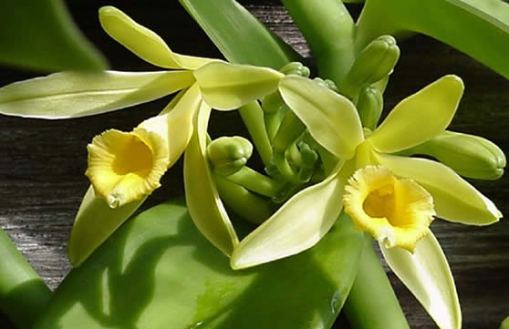
But what does it all DO?
Research into the effects of marijuana has been aided by intense and widespread public interest, but hindered in recent decades by efforts by various parties to suppress any investigation into possible benefits and to spread claims of possible harms (no matter how tenuous), as part of the “war on drugs.” As an ethnographer working with young drug users in person and on the internet, as well as having read widely on the subject, these are the effects I have most often found credibly attributed to marijuana:
Increased appetite, change in the perception of time, relief from pain, intensified awareness (both inside and outside the body), relaxation, euphoria, increased heart rate, lower blood pressure, emotional release, increased vigor, lethargy, inhibited memory, increased creativity, intense introspection, reveries, flights of fancy, lower body temperature, increased sexual pleasure, reduced sexual desire, relief from nausea, greater aesthetic appreciation, magical thinking, heightened interest in spiritual phenomena, and both increased and decreased anxiety (presumably different types of anxiety).
Reported medically relevant effects of marijuana also include bronchodilation, decreased intracranial and intraocular pressure, glucagon release, reduction in insulin tolerance, lymphocyte suppression, antimicrobial, anticonvulsant, antipsychotic, psychotomimetic, anti-inflammatory, antiemetic, antinociceptive and anticarcinogenic effects.
Occasionally marijuana causes many strange and idiosyncratic effects not here described. Some of these may sometimes be labelled as psychotic or spiritual, but these effects are typically short-lived; they do not last and often cannot be produced reliably or consistently, making them difficult, if fascinating, to study.
Many of marijuana’s effects appear to be highly context- and dose-dependent. In small and occasional doses, it is often more stimulating, boosting appetite and providing relief from depression, whereas in very large and frequently repeated doses, these effects may reverse, with less appetite and relative inactivity. While it influences every organ system, its direct effects are largely confined to the maintenance of homeostasis, which it pushes not just in one direction but in several, counteracting and balancing out its own effects. Even a massive overdose will generally have a negligible impact on long term health, though it may be disorienting until it wears off.
The stimulating effects of THC typically last 2-3 hours, whereas the half-life of CBD, which is more relaxing, is 9 hours. Thus, the first dose of marijuana after a period of abstinence will tend to be far more stimulating than subsequent doses, which must compete with the relaxing effects of previous doses, because the relaxation both persists much longer and shares many of the same pathways as the stimulation. Regular ingestion of THC also leads to increased tolerance to its stimulating effects, but not to its relaxing effects, with very heavy use associated with a reversible 20% reduction in CB1 receptor density in some areas of the brain (Hirvonen et al, 2012); THC itself provides a longer term mild relaxing effect than the immediate boost. As cannabinoid activity can produce anxiety, it may well be that developing tolerance to the drug may itself protect against anxiety on a longer time scale; in a sense, by getting high you can get your anxiety out of the way while also benefiting from a variety of relaxing and euphoric effects to counteract it, rather than having to deal with constant, unremitting anxiety. Notably, Hirvonen et al only found the reduction in receptor density in only some areas, so this long term down-tuning does not affect all of the processes influenced by THC, but only some of them. In any case, we need to consider not just the immediate high, but also its persisting effects, if we are to understand the consequences of its use in humans.
Summary: it does lots of things, and sometimes also the opposite. (maybe this will be easier if we go system by system…)
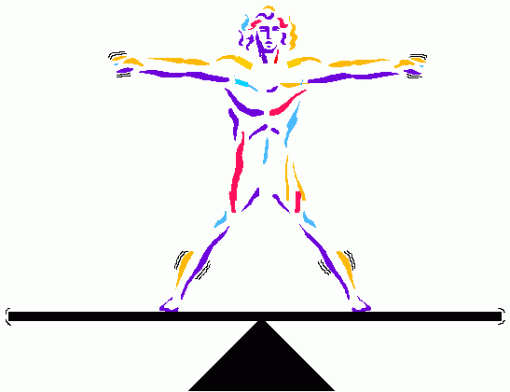
Marijuana in the Brain
The brain’s major inhibitory neurotransmitter is GABA, and the major excitatory neurotransmitter is glutamate; the endocannabinoid system regulates the levels of each of these by selectively suppressing them as called for, hopefully maintaining an appropriate balance. THC temporarily boosts this process, suppressing both inhibition and excitation. With GABA suppressed, a wide variety of effects and processes which would otherwise have been inhibited become more free to play themselves out. This explains the sensory enhancements commonly experienced by marijuana users, with increased sensitivity to smell, sight, sound, texture and much besides, including sexual pleasure. This is probably also the best scientific explanation for its occasionally outlandish effects, from the merely weird to the deeply spiritual to the profoundly unsettling: the mind, unleashed and uncontained, for better or for worse. Glutamate, though itself excitatory, excites neural networks which inhibit various behaviours, and so its suppression may contribute not only to relaxation but also to some of marijuana’s behavioural effects, such as indulgence in magical thinking and the wild dancing. Importantly, glutamate can also damage brain cells (excitotoxicity), and so suppressing it provides some protection brain damage as it occurs in head injury, epilepsy, hypoglycaemia, stroke, alcohol or benzodiazapine withdrawal and a variety of neurodegenerative conditions including multiple sclerosis, Parkinson’s Disease, Alzheimer’s Disease and Huntington’s Disease, among other conditions. Cannabinoid receptors on glial cells are involved in memory storage, recall, and forgetting (Lane et al, 2005), as well as the extinction of conditioned place preferences more specifically (Parker et al, 2004), suggesting that marijuana use may make it easier to adapt to new contexts and to forget old habits. It fundamentally changes how we experience the passage of time; in Hindu mythology, Lord Shiva, poisoned by time, takes marijuana which relieves his anxiety so that he begins to dance, and through his dance the poison is neutralised, thus saving the universe from being destroyed by an imbalance between space and time. Many experiments have shown that marijuana use impairs performance at certain memory tasks, but that this effect disappears after a period of abstinence, and so cannot be described as damage. Rather than merely the absence of remembering, forgetting is an active process by which we let go of extraneous or harmful memories (White, 2001; Pollan, 2002); by boosting forgetting functions through its effects on glial cells, marijuana may provide relief from traumatic memories. (Marcisano, 2001) The creative benefit most commonly cited by artists who use marijuana is in improvisation, getting into the flow so that strange new rhythms can emerge, fascinate and delight. (Fachner, 2003) More research is necessary, but I suspect that increased forgetting and increased improvisation are linked, and that a good description of marijuana’s creative effects might be less rote repetition and more novel recombination; whether that will be desirable or harmful will depend on the task at hand.
Marijuana is very popular among people with ADHD, for whom it may be synergistic with their tendency to hyperfocus, sometimes used to push past ennui into full dynamic engagement (the term for which in the cognitive sciences is “flow”), though it also tends to increase restlessness and can make them even more distractable, especially in larger doses, and so ADHD people often find very small doses to be the most helpful. (Loflin, 2014) One physiological description of ADHD is impaired dopamine transporter function, and the most common pharmaceutical interventions for ADHD are psychostimulants such as amphetamines which stimulate dopamine release directly. Marijuana, on the other hand, does not increase dopamine signalling, but modulates salience through other pathways. For this reason, many ADHD people find that marijuana feels more “natural,” ebbing and flowing with the context, whereas amphetamines often feel forced or artificial. Another difference is that amphetamines often make it very difficult to eat and sleep, whereas marijuana boosts appetite and, for many of its users, provides unusually restful and easy sleep. This is extremely important, because poor sleep and poor diet are major sources of harm among people with ADHD.
Some autistic people have also found marijuana to be of benefit in relieving the overstimulation-related emotional anxiety and tension which can inhibit their behaviour. Recent evidence has emerged that autism may in part be caused by abnormalities in cannabinoid signalling (Földy, 2013), so it seems that the rebalancing effect of marijuana directly interacts with some of the underlying causes of autism. One physiological description of autism is too much glutamate and not enough GABA; by suppressing both glutamate and GABA, marijuana may essentially level the playing field, so that a stoned neurotypical and a stoned autistic person end up on roughly the same level.
In neither ADHD nor autism does marijuana merely suppress symptoms and make a person “normal”; far from it. What it does is to rebalance many metabolic, attentional and neural systems, reconfiguring any problematic balance which may be in place, and producing a new state of consciousness unlike either neurotypical consciousness or the typical expression of either ADHD or autism. That is, it may normalise homeostasis, but to do so is not necessarily normative, in the anthropological sense.
In summary, marijuana rebalances excitation and inhibition in ways which are sometimes highly valued, and which may correct for or prevent imbalances in attentional and cognitive systems.
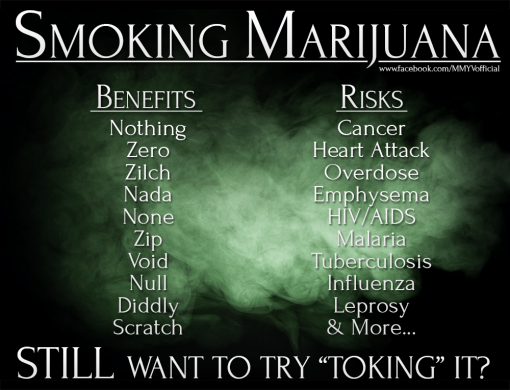
Marijuana, Neuroprotection and Brain Damage
In addition to preventing glutamate excitotoxicity and neuroinflammation, marijuana also reduces the volume of fluid in the head following head injury, lowers brain temperature (trivia: the popular fever reducer sold as Tylenol works partially by breaking down into a cannabinoid reuptake inhibitor, and therefore shares a pathway with marijuana (Bertolini, 2006)) and prevents prion accumulation (Dirikoc et al, 2007), all of which are ways by which it’s known marijuana can protect against brain damage. It also reduces risk of such neurodegenerative conditions as Parkinson’s Disease and Alzheimer’s Disease through other mechanisms besides. (Ramirez et al, 2005; Eubanks et al, 2006) However, because of the pressure from the US government to publish (or fabricate) harms from marijuana, several widely publicised studies have been used to claim that marijuana causes brain damage. In every case, these studies either suggested nothing of the kind when properly interpreted, or were confounded enough to be worthless, and there is, at time of writing, absolutely no credible evidence of any form of brain damage from marijuana use in humans. In a classic example, one team of researchers forced rhesus monkeys to inhale large volumes of smoke, depriving them of oxygen in the process, and attributed their mental decline to marijuana rather than to oxygen deprivation. (Heath et al, 1980) Not surprisingly, subsequent studies failed to reproduce their finding. (Slikker et al, 1990; Paule et al 1992) Other studies have shown mental deficits and brain abnormalities in some young heavy marijuana smokers (Meier, 2012; Smith, 2013, Gilman et al 2014), but it’s highly likely that both the observed deficits and the marijuana use were caused by the same factor, rather than the deficits being caused by the marijuana use, as the deficits are only found in a minority of teenagers who use marijuana, and because there are a variety of sources of deficit which also predict marijuana use. (Tims, 2002) Post traumatic stress disorder (PTSD; often a product of child abuse) is a likely candidate, because it predicts both cognitive deficits (Moradi et al, 2013) as well as adolescent drug use (Maté, 2008; Dube, 2003), including heavy cannabis use. (Cornelius et al, 2009) For people with PTSD, marijuana may correct a chronically dysfunctional stress response (Heim et al, 2000) and make it easier to forget painful memories (Ganon-Elazer 2012; Patel et al, 2004; Marcisano et al, 2001). Regrettably, in none of the studies in which deficits were shown to be correlated with heavy early-onset marijuana use did researchers attempt to control for the enormous confound of past trauma. In light of the indications that marijuana is useful in the treatment of PTSD, to attribute the harms of trauma to a plant being used to alleviate it is particularly bothersome. There has also been a disturbing tendency in news coverage report all findings of alteration as “damage,” even where no deficits, and indeed some potential benefits, were shown. Given the ongoing drug war and propaganda efforts by various governments, the utmost skepticism is warranted in interpreting claims of marijuana-induced brain damage, none of which (to date) survive careful scrutiny grounded in the appropriate scientific literature. Given what we’ve learned about marijuana’s effects the dire claims seem ever more preposterous, especially given the many marijuana users who have distinguished themselves in scientific and artistic communities alike.
Rather than simply accusing hemp flowers of harming teenagers, a more sensible approach might be to listen to teenagers who are heavy marijuana users, to understand why they’re using it and what they’re getting out of it, bearing in mind that they may well be survivors of abuse, which agents of the legal, medical and educational systems may have directly participated in rather than alleviating. Stigma, theft of medicine, segregation and punishment are unacceptable responses to observed suffering.
In summary: marijuana rebalances and soothes a variety of neural processes and can protect against numerous potential sources of damage. No form of brain damage has been demonstrated to have resulted from its use.
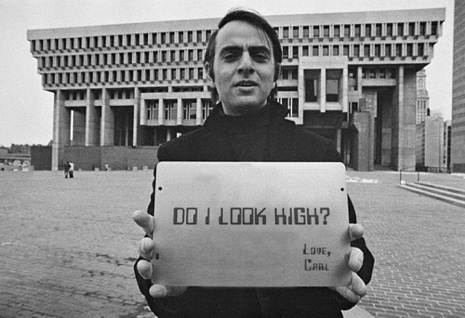
Marijuana and Metabolism
The endocrine system consists of glands throughout the body which regulate everything from energy levels to metabolism to sex drive. CB1 receptors can be found throughout this system and influence the release of many hormones. One function of this system is to produce excitation in response to stress. This is necessary for survival, but when it gets out of hand it can be a major source of harm, especially in a fast paced modern economy where stress may be relentless. One effect of marijuana in the endocrine system seems to be to protect against this, by reducing susceptibility to stress-induced activation in the hypothalamus-pituitary-adrenal axis. (Patel et al, 2004) The details of how it does this, as well as all of its other diverse and complex effects throughout the endocrine system, however, remain murky, but are becoming clearer and will likely continue to do so over the coming years.
Marijuana’s ability to boost appetite is well known, and it is used to treat anorexia as well as diet problems resulting from other drug therapies, such as in patients with AIDS or cancer. Part of this effect on appetite may be because GABA suppression increases the rewarding stimulation from food; another part is its ability to block nausea, including the nausea induced by chemotherapy drugs. While there is a stereotype of getting high and then gorging on lots of delicious food, many of my respondents have informed me that they actually prefer to get high after their meal, finding it to improve their digestion and settle their stomach. It’s also common for “the munchies” to not set in until around 45 minutes after dosing, and it’s here that the endocrine effects, specifically in the pancreas, are explanatory. The pancreas secretes the pair of hormones glucagon and insulin to regulate blood sugar by signalling the liver to break down fat into sugar (glucagon) or to store sugar as fat (insulin). These hormones work as a pair to maintain homeostasis, and they stimulate the release of each other through a complex feedback mechanism. In 2008, it was determined that CB1 activation triggers glucagon release and that CB2 activation lowers glucose-dependent insulin release. (Bermudez-Silva et al, 2008) This helps to explain why marijuana users tend to eat more calories but do not gain any extra weight, have less obesity and lower rates of type II diabetes than non-users (Rodondi et al, 2006; Le Strat, 2011; Rajavashisth et al, 2012), and why some diabetics find that marijuana makes it easier to manage their blood sugar, as marijuana rebalances the relative levels of glucagon and insulin, although anti-inflammatory effects are also relevant. Type II diabetics (whose pancreas still functions) tend to have very high levels of insulin, but the liver is unable to use it, and so blood sugar stays high, and the pancreas damages itself by trying to continually produce more and more insulin, eventually leading to organ failure if the diabetes is unmanaged. By boosting glucagon release and lowering insulin resistance, marijuana may alleviate or prevent the progression of type II diabetes and restore balance to the system. The endocannabinoid system is also separately involved in fat storage (Cota, 2003; Osei-Hyiaman et al, 2005) (interestingly, THC is also fat soluble, and so it seems to be storing itself through this process, and is released back into the bloodstream during exercise (Wong et al, 2013)), and some studies have found marijuana users to have more fat in visceral tissue. (Hézode et al, 2008; Muniyappa, 2013) Cannabinoid antagonists have also been shown to reduce obesity, and not only do rodents given these drugs eat less, they also lose more weight than their reduced feeding can account for. (Pagotto et al, 2006) What exactly this means for users of marijuana (which contains both cannabinoid agonists and antagonists) remains unclear (more fat storage through one mechanism, and less fat storage through another), but the findings of lower rates of obesity and diabetes among marijuana users — despite correlations between marijuana use and a variety of life-style risk factors, including heavier eating — are very promising. Marijuana use is certainly not a major source of harm in this system, and may be of benefit in a variety of (very common) circumstances.
Cannabinoid signalling is also involved in many reproductive functions in both males and females, including in foetal development, and there are even CB receptors on sperm themselves. While the effects of marijuana on sperm and reproductive functions are not well understood, it appears that regular marijuana use may moderately reduce both menses and sperm production, and that therefore while many marijuana users can still conceive, it may be prudent for couples having difficulty conceiving to refrain from using marijuana. On the other hand, many find marijuana to improve their experience of sex, and it even allows for orgasm in some otherwise anorgasmic women. Not enough is known about its effects on pregnancy to be confident as to when it may be of benefit or harm to the foetus, (Pagotto et al, 2006) but it is commonly used to alleviate the nausea associated with morning sickness.
A stereotype of marijuana users is that they are lazy and that the drug makes them inactive. Traditional Hindu practices assume that this is the case, and discourage its use by home-owners, while allowing it to ascetics in the process of renouncing worldly attachments. (Morningstar, 1985) Some marijuana users certainly seem drawn to renunciation, and may show little interest in material advancement, especially when using heavily. Many others, however report that its effects are stimulating, and there have been many elite athletes who used marijuana, including martial arts legend Bruce Lee, basketball legend Kareem Abdul-Jabbar, Olympic gold medallists Michael Phelps and Ross Rebagliati, and more than half of the Oregon Ducks football team. Clearly, its effects are not disastrous to fitness or to the ability to exercise. Noted astronomer Carl Sagan and physicist Richard Feynman both used marijuana to stimulate visionary states and the flow of ideas; a great many other musicians, writers, scientists and artists have admitted to doing so as well. Many of the same have admitted at other times that marijuana can interfere with their performance or leave them distracted and tired. Its effects can be very inconsistent, and depend on the user’s metabolism, dosing strategy and the chemical composition of the strain being used.
In summary, marijuana rebalances energy levels, fat storage, reproductive functions, appetite and metabolism, and can correct for imbalances such as in type II diabetes, anorexia and a variety of stress-related disorders.

Marijuana and Mental Health
The use of marijuana is often seen in people who suffer from a wide variety of mental health problems (Wittchen et al 2007), for which it is often used to self-medicate, for better or for worse. It is known to sometimes relieve depression (Denson, 2006), emotional anxiety (Fusar-Poli et al, 2010) and intense stress (Ganon-Elazer, 2012). However, through its powerful and pervasive effects, it may well trigger an episode of any number of conditions, such as underlying psychoses. Some use marijuana precisely to provoke an inexplicable or extreme mental state, which may be interpreted as either spiritual or psychotic, or to produce greater and longer lasting states of elation and activity (mania), and many religious and shamanic groups have employed it to facilitate communication with spirits, to transport the user to heaven, to destroy karma, to deepen a trance, and much else besides. Marijuana surely is a drug favoured by lunatics and maniacs, not only to end their lunacy or mania but sometimes to provoke it. Does that make it dangerous to people who do not want these effects? Especially, perhaps if they despise the moon?
Much has been made of the association between cannabis use and schizophrenia. Schizophrenia (literally: broken mind) is a diagnostic category which consists of an unknown number of poorly understood mental types, characterised by positive symptoms such as delusions, hallucinations and disordered thinking, and negative symptoms such as not finding pleasure in anything and not being interested in talking to the other humans. Best estimates suggest that around 1 in 100 people will be exhibit schizophrenia at some point during their life, or 1.4 in 100 people who have ever used marijuana. (Zammit, 2007) This makes it a moderate risk factor, but less severe than being a first or second generation immigrant, having a father over the age of 55 at the time of birth, being raised in an urban area, or infection with Toxoplasma gondii, a parasite common among cat owners. (Bourque et al, 2011; Torrey et al, 2012) All of the above effects are dwarfed by familial predisposition, and Proal et al recently found that schizophrenic marijuana users are just as likely to have schizophrenic relatives as schizophrenics who do not use marijuana, suggesting that marijuana is not a cause of schizophrenia at all, but it’s just that schizophrenics are more likely than non-schizophrenics to use marijuana. (Proal et al, 2014) If we wish to reduce risk factors for schizophrenia, we may be better served by banning cats. Other research has suggested that “cannabis induced psychosis,” most characterised by paranoia, is at least partially a direct result of legitimate paranoia occasioned by the war on drugs, rather than the plant itself. (Hamilton et al 2014) There is some evidence that marijuana users with psychosis display more positive symptoms (such as paranoia) and less negative symptoms (such as anhedonia) (Zammit, 2008); this is especially interesting because mainstream psychiatry lacks an effective treatment for the negative symptoms, and it may be that many people are self medicating with marijuana for precisely this reason. Not only do people with psychosis use more marijuana than people without psychosis, but Giuffrida et al found that the body may be responding to schizophrenia by increasing endocannabinoid expression, and that this was associated with a reduction in symptom severity. (Giuffrida et al, 2004) Should we be surprised that some schizophrenics are drawn to a plant which mimics some of the body’s defence mechanisms against their symptoms? Lastly, while THC may occasionally produce psychotomimetic effects (that is, very stoned people may appear to be psychotic until they sober up), CBD appears to be anti-psychotic, (Zuardi et al, 2006) and so modulating the endocannabinoid system, for example with a high-CBD strain of marijuana, may be clinically useful in managing the positive symptoms of psychosis as well as the negative ones. In short, the evidence does not support the claim that using marijuana puts you at greater risk for harms from psychosis; perhaps even the opposite is the case, but more research is necessary. Indeed, prohibition is, itself, undeniably a far greater source of harm, for example by severely exacerbating such problems as racial oppression. (Fellner, 2000) Whether the same would be true for the prohibition of cats remains to be tested.
Among people living under the description of bipolar disorder, marijuana is the number one drug of choice, and those who use marijuana have less depression and more mania than those who do not. (Leweke, 2008) This is not surprising, given marijuana’s potential to increase positive symptoms and decrease negative ones. As there are strong cultural forces which value the creativity and charisma of mania and demonise depression, and because people living under the description of bipolar disorder typically identify with their hypomanic self rather than with a sober baseline, (Martin, 2007) marijuana is often used to improve mood and productivity, as well as to deal with stress in highly demanding contexts, with occasionally destabilising or dangerous consequences. To understand its effects in bipolar disorder, therefore, it is necessary to compare its users to others facing similar contexual pressures — for example, are university students (or entrepreneurs) more or less likely to “burn out” if they use marijuana? It’s also important to remember that marijuana has anti-depressant effects and is used to produce stimulation among people who do not have bipolar disorder, as well as by those who do. It’s not surprising that people with bipolar tendencies use it for the same reasons that others use it, even knowing it may increase the likelihood or intensity of a manic episode. Such people would do well to monitor their use (or to recruit friends and family to help monitor their use), and to consider refraining from using if they have a history of making dangerous decisions while manic.
In summary, marijuana rebalances mood, anxiety and attention in ways which may correct for or prevent certain forms of imbalance, but which may also upset a tenuous balance.

Marijuana in the Heart and Lungs
Much attention has been paid to the effects on the lungs of smoking marijuana, because of the severe and well known harms from smoking tobacco. Marijuana smoke contains many of the same carcinogens as tobacco smoke, and some in far higher concentrations (Moir et al, 2008), and so it was expected that it would be a cause of lung disease, as those chemicals are believed to cause cancer and emphysema in tobacco smokers. This however turns out not to be the case; marijuana smokers do not have elevated rates of lung cancer or emphysema, the two main debilitating effects of chronic tobacco smoking, and none of its long term effects on lung function are of clear clinical significance. (Tashkin, 2013) The analogy therefore can be rejected: marijuana is not dangerous in the ways that tobacco is dangerous. In fact, tobacco smokers who also smoke marijuana have lower rates of cancer and emphysema than do tobacco smokers who do not smoke marijuana, (Aldington, 2007) suggestive of the medicinal and/or protective effects of the flower vapours. Some marijuana smokers experience significant irritation and pain in the lungs which worsens over years of smoking, which may lead to a severe cough, and which is consistent with chronic bronchitis, but this often disappears if they switch from smoking to vaporising, even after decades of heavy smoking (vaporising is a method in which the plant matter is heated enough to convert the active compounds into a gaseous form, but below a temperature which would burn the plant matter, thereby avoiding the toxic byproducts of combustion). The lack of association between marijuana smoking and cancer, despite the well documented ample presence of known carcinogens, is strong evidence of its anti-carcinogenic effects; the chemicals it contains seem to compensate for the harmful effects of smoke inhalation (this is far from the only evidence of anti-carcinogenic effects (Ligresti et al, 2006), but it is suggestive as to their extent and efficacy in the wild). Marijuana, as a bronchodilator and an anti-inflammatory, has also been used in the treatment of asthma, and many asthmatic marijuana users have reported that their symptoms reduced during their period of use. (Williams, 1976)
Another major cause of death in tobacco smokers is heart disease, and, like the lung effects, there’s no evidence of elevated levels of coronary disease in marijuana smokers, despite the presence of various toxins in marijuana smoke. In the heart, the effects of marijuana are quite clear: decreased blood pressure, increased heart rate, often by as much as 30% , with CB1 and CB2 receptors as elsewhere working in opposite directions to control blood vessel dilation and other aspects of cardiovascular function. For most users this is not an appreciable concern, although it’s not uncommon for marijuana users to abort exercise because of strange feelings in their heart, or specifically because they feel that their heart is pumping too quickly or strongly. Some people with chronically low blood pressure find that they react badly to marijuana, and it is common for people under the acute influence of alcohol — which also lowers blood pressure — to become dizzy or nauseous if they proceed to smoke marijuana. Doing so may result in “the spins,” a very uncomfortable feeling where the world appears to be spinning and only spins faster if one closes one’s eyes. It is highly advisable therefore not to smoke marijuana while already drinking, especially if one is not a regular marijuana user and may be taken by surprise by the blood pressure crash. Smoking and then drinking does not appear to be nearly so dangerous, partly due to relative ease of dose control (you can sip your drink, but you cannot unsmoke a joint).
In people at elevated risk, a heart rate boost of 30% can trigger a heart attack. It has been estimated that marijuana smoking may increase risk for the next hour of myocardial infarction (heart attack) by a similar extent to having sex or exercising. Therefore, if your doctor has told you to abstain from sex due to the danger to your heart, you should consider also abstaining from marijuana. However, just because it’s more likely for a heart attack to take place during that window doesn’t mean it increases the risk of a heart attack happening at all. Indeed, a study of 3886 people who had already had at least one heart attack found no statistically significant association between marijuana use and death over an 18 year period (Frost et al, 2012), so there’s no great cause for worry. Instead, it seems to be the case that, if someone was going to have a heart attack anyway, it’s liable to happen within an hour of getting high, because of marijuana’s circulatory effects. CB1 activation has also been shown to worsen the damage from repurfusion (the shock caused by oxygen returning to cells temporarily deprived of it due to a heart attack), whereas CB2 protects against this damage, as well as against plaque instability and inflammation, such as in atherosclerosis (remember, THC activates both CB1 and CB2, so it both helps and hinders at the same time). CBD, meanwhile, has other non-cannabinoid receptor mediated cardioprotective effects. A high-CBD strain of marijuana may therefore be more beneficial for people at risk for heart attack than a high-THC strain. (Russo, 2006) For those concerned about heart and lung effects, vapourising or eating marijuana may be preferable to smoking it, as that will greatly reduce exposure to a variety of toxins. That said, the appropriate level of concern for smoking marijuana is probably more comparable to the dangers of toasting bread instead of eating it raw than it is to smoking tobacco, and many users will continue to consider this an acceptable trade-off for the convenience and ease of dose-control which come from smoking. (Montecucco, 2012)
In summary, marijuana rebalances dilation and contractility in the heart and lungs and may correct for or prevent such imbalances as usually result from smoke inhalation.
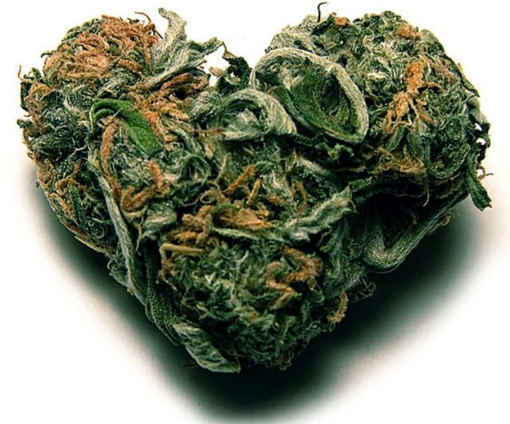
Marijuana in the Bones, Muscles and Joints
Unlike the many hard objects we encounter outside the body, our bones are constantly being broken down and remade. In young people there is typically more growth than break-down; this levels off and then reverses with age, and, as bone formation is driven by estrogen, post-menopausal women, women who have had their ovaries removed, or others who have very low estrogen, are at increased risk of bone loss and fracture. Cannabinoids regulate this system, stimulating bone formation via CB1 activation and slowing the rate of break-down via CB2 activation, and so marijuana may compensate for factors which could otherwise drive osteoporosis. (Scutt, 2007; Bab, 2009) As an anti-inflammatory and muscle relaxant, marijuana can also improve flexibility and provide relief for everything from soreness after exercise to certain types of arthritis. Indeed, endocannabinoid activation has been found to occur naturally following exertion, and is believed to allow for longer periods of exertion in what’s known as the “runner’s high.” (Sparling et al, 2003) I have observed marijuana use in the wild stimulating the user to begin exercising or facilitating continuation of exercise despite fatigue. I have also seen the opposite: half hearted attempts at exercise followed immediately by cessation. On the one hand, it may be that marijuana makes it easier to continue doing what one was already doing, such as either running or lying on the couch. On the other hand, it sometimes triggers a reversal, from low energy to high energy or vice versa. Like the endogenous runner’s high, using marijuana when fatigued may produce a “second wind” and allow the user to continue. The cardio-pulmonary dilation, discussed above, is also relevant, as it may improve oxygen availability during exercise.
In summary, marijuana rebalances bone growth, muscle fatigue and inflammation in ways which may correct for or prevent certain forms of imbalance, such as age related bone loss and pain after exercise
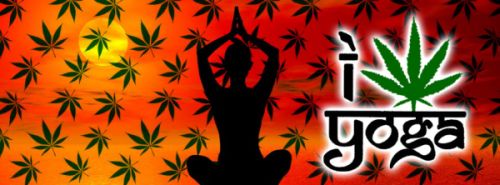
Marijuana and the Immune System
THC has been experimentally shown to inhibit certain immune functions — in particular, lymphocyte activity — and to augment others, (Cabral, 2001) and marijuana also contains a variety of antimicrobial agents. (Nissen, et al, 2010) These immunological effects can protect against numerous auto-immune disorders, increase healing and down-tune immune responses. It is likely the case that marijuana can protect against certain kinds of infections under certain conditions, and that it can increase vulnerability to other infections under other conditions. Cannabis oil, especially applied topically, may be an effective treatment for acne, psoriasis (Wilkinson 2007), contact dermatitis (Karsak et al, 2007) as well as a variety of other inflammatory or allergic responses, and against certain infections because of its direct anti-microbial effects.
In summary, marijuana rebalances inflammation and other immune responses and may correct for or prevent certain forms of imbalance, such as autoimmune disorders.
Conclusion:
Marijuana has very complicated effects throughout the body. Many of these effects are often highly valued and sought for a wide variety of reasons. Some of these effects can in some situations can be undesirable, and THC by itself has been implicated in a variety of potential harms, including anxiety, psychosis-like mental effects, heart attack and immune suppression. It is necessary therefore to emphasise the importance of using cannabis flowers instead of isolated chemicals such as pure THC, because of the ways in which the other chemicals in the flowers compensate for, counteract, or amplify the effects of THC. (Russo, 2011) Whether marijuana will boost or inhibit each bodily system depends on the state of the body at the time of use, the chemical makeup of the marijuana being used, and the dosing strategy. Smoking one small hit one evening per week may well have the opposite effect of consuming cannabis oil throughout the day every day; the former may be primarily stimulating whereas the latter may lead to a generalised relaxation and slowing of metabolism. As either/both may be desired by each user, preferences in plant variety and dosage strategy vary accordingly. Some people react badly to the plant, whether for mental, cognitive, hormonal or ideological reasons, and some are allergic to it; for many others, it can be profoundly helpful, providing a way by which to take some conscious control over the regulation of homeostasis and to seek a balance which will work for us.

The above is my best understanding of what marijuana does. Although I have here leaned mostly upon scientific journal articles, which I have tried both to understand and to interpret, I am not in fact an advanced specialist in every relevant discipline — nor, I suspect, is anyone else; my academic background is as an ethnographer, and so I consider my primary responsibility to be towards the humans using the plant, for whatever reasons, and with whatever consequences, and I engage with the scientific literature in order to better understand and interpret the observations I have made in the wild, the many curious things I have been told in interviews both formal and informal. I am absolutely certain that there is very important information about the effects of this plant which I do not understand or which I have not yet seen. If you know of anything useful, or suspect that something I have said is inaccurate, incomplete or in other ways merits revision, I would be happy to hear your suggestions. May my best endeavours to faithfully convey my observations be useful to you.
Happy 420!
Can you smell the flowers?
Funding:
None. Some years ago I took a vow never to sell any drugs about which I expected to write, so as to avoid conflict of interest. I am, however, almost completely out of money, and would be very appreciative of donations and/or job offers so that I can continue to live, buy groceries, learn and write. (no paypal; can accept email money transfers to michaelvipperman@gmail.com, or food offerings in Toronto area only)
Donations received as of 8:45 PM, May 2, 2014: $10.
Acknowledgements:
Proof reading provided by James Birch, Lav Dimitrije and A.C. Patterson.
I own the rights to none of the images.
Bibliography:
Aldington S, Williams M, Nowitz M, Weatherall M, Pritchard A, McNaughton A, Robinson G, Beasley R. 2007. “Effects of cannabis on pulmonary structure, function and symptoms” Thorax 62:1058-1063
Arendt M, Mortensen PB, Rosenberg R, Pedersen CB, Waltoft BL. 2008. “Familial Predisposition for Psychiatric Disorder; Comparison of Subjects Treated for Cannabis-Induced Psychosis and Schizophrenia” Arch Gen Psychiatry 65(11):1269-1274. doi:10.1001/archpsyc.65.11.1269.
Bab I, Zimmer A, Melamed E. 2009. “Cannabinoids and the skeleton: from marijuana to reversal of bone loss.” Ann Med 41(8):560-7
Bermúdez-Silva FJ, Suárez J, Baixeras E, Cobo N, Bautista D, Cuesta-Muñoz AL, Fuentes E, Juan-Pico P, Castro MJ, Milman G, Mechoulam R, Nadal A, Roriguez de Fonseca F. 2008. “Presence of functional cannabinoid receptors in human endocrine pancreas” Diabetologia 51(3):476-87
Bertolini A, Ferrari A, Ottani A, Guerzoni S, Tacchi R, Leone S. 2006. “Paracetamol: new vistas of an old drug” CNS Drug Rev. 12(3-4):250-75
Bilkei-Gorzo A. 2012. “The Endocannabinoid system in normal and pathological brain ageing.” Philosophical Transactions of The Royal Society. Vol 367 no 1607 3326-3341
Bourque F, van der Ven E, Malla A. 2011. “A meta-analysis of the risk for psychotic disorders among first- and second-generation immigrants.” Psychol Med 41(5):897-910
Cabral GA. 2001. “Marijuana and Cannabinoids: Effects on Infections, Immunity, and AIDS” Journal of Cannabis Therapeutics 1(3/4): 61-85
Callén L, Moreno E, Barroso-Chinea P, Moreno-Delgado D, Cortés A, Mallol J, Casadó V, Lanciego JL, Franco R, Lluis C, Canela EI, McCormick PJ. 2012. “Cannabinoid receptors CB1 and CB2 form functional heteromers in brain.” J Biol Chem 287(25):20851-65
Cornelius JR, Kirisci L, Reynolds M, Clark DB, Hayes J, Tarter R. 2009. “PTSD contributes to teen and young adult cannabis use disorders” Addictive Behaviors 35(2):91-94
Cota D, Marsicano G, Tschöp M, Grübler Y, Flachskamm C, Schubert M, Auer D, Yassouridis A, Thöne-Reineke C, Ortmann S, Tomassoni F, Cervino C, Nisoli E, Linthorst AC, Pasquali R, Lutz B, Stalla GK, Pagotto U. 2003. “The endogenous cannabinoid system affects energy balance via central orexigenic drive and peripheral lipogenesis.” J Clin Invest 112(3):423-31
Denson TF, Earleywine M. 2006. “Decreased depression in marijuana users” Addictive Behaviour 31(4):738-42
Dirikoc S, Priola SA, Marella M, Zsurger N, Chabyr J. 2007. “Nonpsychoactive cannabidiol prevents prion accumulation and protects neurons against prion toxicity.” Journal of Neuroscience 26(36):9537-44
Dube SR, Felitti VJ, Dong M, Chapman DP, Giles WH, Anda RF. 2003. “Childhood abuse, neglect, and household dysfunction and the risk of illicit drug use: the adverse childhood experiences study.” Pediatrics 111(3):564-72
Eubanks LM, Rogers CJ, …, Janda KD. 2006. “A Molecular Link Between the Active Component of Marijuana and Alzheimer’s Disease Pathology.” Molecular Pharmacology 3(6): 773-777
Fachner J. 2003. “Jazz, improvisation and a social pharmacology of music.” Music Therapy Today 4(3)
Fellner J, Walsh S, Roth K, Smart, M. 2000. “Punishment and Prejudice: Racial Disparities in the War on Drugs” Human Rights Watch 12(2)
Földy C, Malenka RC, Südhof TC. 2013. “Autism-associated neuroligin-3 mutations commonly disrupt tonic endocannabinoid signalling” Neuron 78(3):498-509
Fusar-Poli P, Crippa JA, Bhattacharyya S, Borgwardt SJ, Allen P, Martin-Santos R, Seal M, Surguladze SA, O’Carrol C, Atakan Z, Zuardi AW, McGuire PK. 2009. “Distinct effects of {delta}9-tetrahydrocannabinol and cannabidiol on neural activation during emotional processesing.” Arch Gen Psychiatry 66(1):95-105
Fusar-Poli P, Allen P, Bhattacharyya S, Crippa JA, Mechelli A, Borgwardt S, Martin-Santos R, Seal ML, O’Carrol C, Atakan Z, Zuardi AW, McGuire P. 2010. “Modulation of effective connectivity during emotional processing by Delta 9-tetrahydrocannabinol and cannabidiol” International Journal of Neuropsychopharmacology 13(4):421-32
Frost L, Mostofsky E, … Mittleman, MA. 2013. “Marijuana Use and Long-Term Mortality among Survivors of Acute Myocardial Infarction.” American Heart Journal; 165(2) 170-175
Ganon-Elazar E, Akirav I. 2012. “Cannabinoids Prevent the Development of Behavioral and Endocrine Alterations in a Rat Model of Intense Stress.” Neuropsychopharmacology 37(2): 456-466
Gilman JM, Kuster JK, Lee S, Lee MJ, Kim BW, Makris N, van der Kouwe A, Blood AJ, Breiter HC. 2014. “Cannabis use is quantitatively associated with nucleus accumbens and amygdala abnormalities in young adult recreational users.” The Journal of Neuroscience 34(16):5529-5538
Giuffrida A, Leweke FM, Gerth CW, Schrieber D, Koethe D, Faulhaber J, Klosterkotter J, Piomelli D. 2004. “Cerebrospinal Anandamide Levels are Elevated in Acute Schizophrenia and are Inversely Correlated with Psychotic Symptoms.” Neuropsychopharmacology 29 2108-2114
Gonzalez R, Swanson JM. 2012. “Long-term effects of adolescent-onset and persistent use of cannabis.” Proc Natl Acad Sci 109(40):15970-15971.
Grant I. 2003. “Non-acute (residual) neurocognitive effects of cannabis use: A meta-analytic study.” Journal of the International Neuropsychological Society 9(5):679-689
Hamilton I, Lloyd C, Hewitt C, Godfrey C. 2014. “Effect of reclassification of cannabis on hospital admissions for cannabis psychosis: A time series analysis.” International Journal of Drug Policy 25.1 151-156
Hampson AJ, Grimaldi M, …, Wink D. 1998. “Cannabidiol and delta-9-tetrahydrocannabinol are neuroprotective antioxidants.” Proc Natl Acad Sci. 95(14):8268-8273
Haney M, Hart CL, Vosburg SK, Nasser J, Bennett A, Zubaran C, Foltin RW. 2004. “Marijuana withdrawal in humans: effects of oral THC or divalproex” Neuropsychopharmacology 29(1):158-70
Häring M, Kaiser N, …, Lutz B. 2011. “Circuit Specific Functions of Cannabinoid CB1 Receptor in the Balance of Investigatory Drive and Exploration” PloS One 6(11): e26617.
Heath RG, Fitzjarrell AT, Fontana CJ, Garey RE. 1980. “Cannabis sativa: Effects on brain function and ultrastructure in rhesus monkeys.” Biological Psychiatry 15(5):657-690
Heim C, Newport DJ, Heit S, Graham YP, Wilcox M, Bonsall R, Miller AH, Nemeroff CB. 2000 “Pituitary-adrenal and autonomic responses to stress in women after sexual and physical abuse in childhood.” JAMA 284(5):592-7
Hézode C, Zafrani ES, Roudot-Thoraval F, Costentin C, Hessami A, Bouvier-Alias M, Medkour F, Pawlostky JM, Lotersztajn S, Mallat A. 2008. “Daily cannabis use: a novel risk factor of steatosis severity in patients with chronic hepatitis C” Gastroenterology 134(2):432-9
Hirvonen J, Goodwin RS, Li C-T, Terry GE, Zoghbi SS, Morse C, Pike VW, Volkow ND, Huestis MA, Innis RB. 2012. “Reversible and regionally selective downregulation of brain cannabinoid CB1 receptors in chronic daily cannabis smokers.” Molecular Psychiatry 17, 642-649
Hohmann AG, Suplita RL, Bolton NM, Neely MH, Fegley D, Mangieri R, Krey JF, Walker JM, Holmes PV, Crystal JD, Duranti A, Tontini A, Mor M, Tarzia G, Piomelli D. 2005. “An endocannabinoid mechanism for stress-induced analgesia.” Nature 435(7045):1108-12
http://www.ncbi.nlm.nih.gov/pubmed/15973410
Iuovone T, Esposito G, Esposito R, Santamaria R, Di Rosa M, Izzo AA. 2004. “Neuroprotective effect of cannabidiol, a non-psychoactive component from Cannabis sativa, on beta-amyloid-induced toxicity in PC12 cells” Journal of Neurochemistry 89 134-141
Izzo AA, Borrelli F, Capasso R, Di Marzo V, Mechoulam R. 2009. “Non-psychotropic plant cannabinoids: new therapeutic opportunities from an ancient herb.” Trends in Pharmacological Science 30(10):515-27
Karsak M, Gaffal E, Date R, Wang-Eckhardt L, Rehnelt J, Petrosino S, Starowicz K, Steuder R, Schlicker E, Cravatt B, Mechoulam R, Buettner R, Werner S, Di Marzo V, Tüting T, Zimmer A. 2007. “Attenuation of allergic contact dermatitis through the endocannabinoid system.” Science 316(5830):1494-7
Lane SD, Cherek DR, …, Tcheresmissine OV. 2005. “Marijuana Effects on Human Forgetting Functions” J Exp Anal Behav. 83(1): 67-83
Le Strat Y, Le Foll B. 2011. “Obesity and Cannabis Use: Results from 2 Representative National Surveys” American Journal of Epidemiology doi: 10.1093/aje/kwr200
Leweke FM, Koethe D. 2008. “Cannabis and psychiatric disorders: it is not only addiction.” 13(2):264-75
Ligresti A, Moriello AS, Starowicz K, Matias I, Pisanti S, De Petrocellis L, Laezza C, Portella G, Bifulco M, Di Marzo V. 2006. “Antitumor activity of plant cannabinoids with emphasis on the effect of cannabidiol on human breast carcinoma” J Pharmacol Exp Ther. 316(3):1375-87
Loflin M, Earleywine M, De Leo J, Hobkirk A. 2014. “Subtypes of Attention Deficit-Hyperactivity Disorder (ADHD) and Cannabis Use)“. Substance Use an Misuse 49:427-434
Lucas P, Reiman A, Earleywine M, McGowan SK, Oleson M, Coward MP, Thomas B. 2013. “Cannabis as a substitute for alcohol and other drugs: A dispensary-based survey of substitution effect in Canadian medical cannabis patients” Addiction Research & Theory 21(5):435-442
Marsicano G, Wotjak CT, Azad SC, Bisogno T, Rammes G, Cascio MG, Hermann H, Tang J, Hofmann C, Zieglgänsberger W, Di Marzo V, Lutz B. 2001. “The endogenous cannabinoid system controls extinction of aversive memories” Nature 418, 530-534
Martin E. 2007. Bipolar Expeditions: Mania and Depression in American Culture. Princeton University Press.
Maté, G. 2008. In the Realm of Hungry Ghosts: close encounters with addiction. Alfred A Knopf Canada
Meier MH, Caspi A, Ambler A, Harrington H, Houts R, Keefe RSE, McDonald K, Ward A, Poulton R, Moffitt T. 2012. “Persistent cannabis users show neuropsychological decline from childhood to midlife.” PNAS 109(40):E2657-E2664
Moir D, Rickert WS, Levasseur G, Larose Y, Maertens R, White P, Desjardins S. 2008. “A Comparison of Mainstream and Sidestream Marijuana and Tobacco Cigarette Smoke Produced under Two Machine Smoking Conditions” Chem. Res. Toxicol. 21(2):494-502
Montecucco F, Di Marzo V. 2012. “At the heart of the matter: the endocannabinoid system in cardiovascular function and dysfunction.” Trends in Pharmacological Sciences 33(6):331-40
Moore TH, Zammit S, Lingford-Hughes A, Barnes TR, Jones PB, Burke M, Lewis G. 2007. “Cannabis use and risk of psychotic or affective mental health outcomes: a systematic review.” Lancet 370(9584):319-28
Moradi AR, Doost HTN, Taghavi MR, Yule W, Dalgleish T. 2003. “Everyday Memory Deficits in Children and Adolescents with PTSD: Performance on the Rivermead Behavioural Memory Test” Journal of Child Psychology and Psychiatry 40(3):357-361
Morningstar PJ. 1985. “Thandai and Chilam: Traditional Hindu Beliefs About the Proper Uses of Cannabis” Journal of Psychoactive Drugs 17:3, 141-165
Muniyappa R, Sable S, Ouwerkerk R, Mari A, Gharib AM, Walter M, Courville A, Hall G, Chen KY, Volkow ND, Kunos G, Huestis MA, Skarulis MC. 2013. “Metabolic Effects of Chronic Cannabis Smoking” Diabetes Care 36.9 2415-2422
Nicholson AN, Turner C, Stone BM, Robson PJ. 2004. “Effect of delta-9-tetrahydrocannabinol and cannabidiol on nocturnal sleep and early-morning behaviour in young adults.” Journal of Clinical Psychopharmacology 24: 305-313
Nissen L, Zatta A, Stefanini I, Grandi S, Sgorbati B, Biavati B et al. 2010. “Characterization and antimicrobial activity of essential oils of industrial hemp varieties.” Fitoterapia 81:413-419
Osei-Hyiaman D, DePetrillo M, Kunos G. 2005. “Endocannabinoid activation at hepatic CB1 receptors stimulates fatty acid synthesis and contributes to diet-induced obesity” Journal of Clinical Investigation 115(5): 1298-1305
Pagotto U, Marsicano G, Cota D, Lutz B, Pasquali R. 2006. “The Emerging Role of the Endocannabinoid System in Endocrine Regulation and Energy Balance.” Endocrine Reviews 27.1
Parker LA, Burton P, Sorge RE, Yakiwchuk C, Mechoulam R. 2004. “Effect of low doses of delta9-tetrahydrocannabinol and cannabidiol on the extinction of cocaine-induced and amphetamine-induced conditioned place preference learning in rats.” Psychopharmaceology (Berl) 175(3):360-6
Patel S, Roelke CT, Rademacher DJ, Cullinan WE, Hillard CJ. 2004. “Endocannabinoid signalling negatively modulates stress-induced activation of the hypothalamic-pituitary-adrenal axis.” Endocrinology 145(12):5431-8
Paule MG, Allen RR, Bailey JR, Scallet AC, Ali SF, Brown RM, Slikker W Jr. 1992. “Chronic marijuana smoke exposure in the rhesus monkey. II: Effects on progressive ratio and conditioned position responding.” J Pharmacol Exp Ther 260(1):210-22
Petrocellis L, Marzo V. 2009. “Non-CB1, non-CB2 receptors for endocannabinoids, plant cannabinoids and synthetic cannabimimetics: focus on G-protein-coupled receptors and transient receptor potential channels.” Journal of Neuroimmune Pharmacology 5(1):103-21
Pollan M. 2002. The Botany of Desire: A Plant’s-Eye View of the World. Random House Trade Paperbacks
Proal AC, Fleming J, Galvez-Buccollini JA, DeLisi LE. 2014. “A controlled family study of cannabis users with and without psychosis” Schizophrenia Research 152.1 283-288
Rajavashisth TB, Shaheen M, Norris KC, Pan D, Sinha SK, Ortega J, Friedman TC. 2012. “Decreased prevalance of diabetes in marijuana users: cross-sectional data from the National Health and Nutrition Examination Survey (NHANES) III” BMJ Open 2:e000494
Ramírez BG, Blázquez C, del Pulgar TG, Guzmán Manuel, de Ceballos ML. 2005. “Prevention of Alzheimer’s Disease Pathology by Cannabinoids: Neuroprotection Meditated by Blockade of Microglial Activation.” Journal of Neuroscience 25(8):1904-1913
Rodondi N, Pletcher MJ, Liu K, Hulley SB, Sidney S. 2006. “Marijuana use, diet, body mass index and cardiovascular risk factors (from the CARDIA study)” American Journal of Cardiology 15;98(4): 478-84
Russo EB, Guy GW. 2006. “A tale of two cannabinoids: the therapeutic rationale for combining tetrahydrocannabinol and cannabidiol.” Med Hypotheses 66:234-246
Russo EB. 2011. “Taming THC: potential cannabis synergy and phytocannabinoid-terpenoid entourage effects” British Journal of Pharmacology 163 1344-1364
Scutt A, Williamson ED. 2007. “Cannabinoids stimulate fibroblastic colony formation by bone marrow cells indirectly via CB2 receptors.” Calcif Tissue Int. 80(1):50-9
Sewell RA, Poling J, Sofuoglu M. 2009. “The Effect of Cannabis Compared with Alcohol on Driving”.American Journal on Addictions; 18:1-9
Slikker W Jr, Paule MG, Ali SF, Andrew CS, Bailey JR. 1991. “Chronic Marijuana Smoke Exposure in the Rhesus Monkey I. Plasma Cannabinoid and Blood Carboxyhemoglobin Concentrations and Clinical Chemistry Parameters.” Toxicological Sciences 17(2):321-334
Smith MJ, Cobia DJ, Wang L, Alpert KI, Cronenwett WJ, Goldman MB, Mamah D, Barch DM, Breiter HC, Csernansky JG. 2013. “Cannabis-Related Working Memory Deficits and Associated Subcortical Morphological Differences in Healthy Individuals and Schizophrenia Subjects.” Schizophrenia Bulletindoi: 10.1093/schbul/sbt176
Sparling PB, Giuffrida A, Piomelli D, Rosskopf L, Dietrich A. 2003. “Exercise activates the endocannabinoid system” Neuroreport 14(15)
Tashkin DP. 2013. “Effects of Marijuana Smoking on the Lung” Annals of the American Thoracic Society 10(3):239-247
Thomas A, Baillie GL, Phillips AM, Razdan RK, Ross RA, Pertwee RG. 2007. “Cannabidiol displays unexpectedly high potency as an antagonist of CB1 and CB2 receptor agonists in vitro.” British Journal of Pharmacology 150: 613-623
Tims FM, Dennis ML, Hamilton N, Buchan BJ, Diamond G, Funk R, Brantley LB. 2002. “Characteristics and problems of 600 adolescent cannabis users in outpatient treatment.” Addiction 97(s1): 46-57
Torrey EF, Bartko JJ, Yolken RH. 2012. “Toxoplasma gondii and Other Risk Factors for Schizophrenia: An Update.” Schizophrenia Bull 38(30: 642-647
Ware MA, Wang T, Shapiro S, Robinson A, Ducruet T, Huynh T, Gamsa A, Bennett GJ, Collet JP. 2010. “Smoked cannabis for chronic neuropathic pain: a randomized controlled trial.” CMAJ 182.14 , doi: 10.1503/cmaj.091414
White KG. 2001. “Forgetting Functions” Animal Learning & Behaviour 29(3):193-207
Williams SJ, Hartley JP, Graham JD. 1976. “Bronchodilator effect of delta1-tetrahydrocannabinol administered by aerosol of asthmatic patients” Thorax 31(6): 720-723
Wilkinson JD, Williamson EM. 2007. “Cannabinoids inhibit human keratinocyte proliferation through a non-CB1/CB2 mechanism and have a potential therapeutic value in the treatment of psoriasis.” Journal of Dermatological Sciences 45:87-92
Wittchen H-U, Fröhlich C, Behrendt S, Günther A, Rhm J, Zimmerman P, Lieb R, Perkonigg A. 2007. “Cannabis use and cannabis use disorders and their relationship to mental disorders: A 10-year prospective-longitudinal community study in adolescents.” Drug and Alcohol Dependence 88(1):S60-S70
Wong A, Montebello ME, Norberg MM, Rooney K, Lintzeris N, Bruno R, Booth J, Arnold JC, McGregor IS. 2013. “Exercise increases plasma THC concentrations in regular cannabis users.” Drug and AlcoholDependence 133.2 763-767
Zammit S. 2008. “Effects of cannabis use on outcomes of psychotic disorders: systematic review” The British Journal of Psychiatry 193:357-363
Zuardi AW, Crippa JA, Hallak JE, Moreira FA, Gumaraes FS. 2006. “Cannabidiol, a Cannabis sativa constitutent, as an antipsychotic drug.” Brazilian Journal of Medical and Biological Research 39(4) 421-429
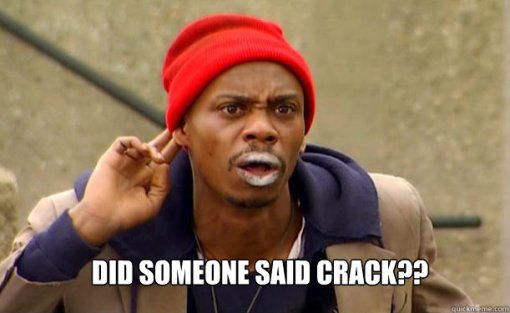 In the white middle/upper class imagination, crack has long provided a convenient transfer point by which the responsibility for racial inequities could be shifted from white society (racism) to black people themselves, via the proxy of a drug. Crack thus inherited the legacies of slavery and systematic discrimination. Faithful to these roots, its criminal prosecution has brought terrible violence against already severely marginalised people. In the United States, prior to the Obama administration, crack cocaine was punishable 100 times as severely as powdered cocaine (under Obama, that ratio was lessened to 18 to 1), even though crack and powder cocaine are literally the same drug, different only in means of ingestion (and therefore in rate of absorption). Powdered cocaine, however, is associated with rich whites, and crack cocaine is associated with poor blacks. As those incarcerated in the United States are required to work, often under threat of increased sentences or even solitary confinement, disproportionate prosecution of the War on Drugs against young black males has ensured a steady supply of slave labour for American manufacturing. To justify these practices, crack has been repeatedly vilified, its harms conflated with those of endemic poverty and malnutrition. Discrimination is covered up by medicalisation, turning a moral problem into personal problem, poverty into criminality and then into disease. Rob Ford, however, is not black, nor is his family poor. To the gentrifiers who dominate this city, for a white mayor to be a crack user was incomprehensible — it didn’t match the script for either mayors or crack users. Much of the ensuing scandal revolved around race, with Ford casting himself as white saviour while simultaneously uttering bigoted comments, repeatedly accused of racism but also of having inappropriately appeared in photographs with people whose appearance marks them as outsiders to be avoided. He got high with people from whom he was supposed to be hiding, and it blew everyone’s minds.
In the white middle/upper class imagination, crack has long provided a convenient transfer point by which the responsibility for racial inequities could be shifted from white society (racism) to black people themselves, via the proxy of a drug. Crack thus inherited the legacies of slavery and systematic discrimination. Faithful to these roots, its criminal prosecution has brought terrible violence against already severely marginalised people. In the United States, prior to the Obama administration, crack cocaine was punishable 100 times as severely as powdered cocaine (under Obama, that ratio was lessened to 18 to 1), even though crack and powder cocaine are literally the same drug, different only in means of ingestion (and therefore in rate of absorption). Powdered cocaine, however, is associated with rich whites, and crack cocaine is associated with poor blacks. As those incarcerated in the United States are required to work, often under threat of increased sentences or even solitary confinement, disproportionate prosecution of the War on Drugs against young black males has ensured a steady supply of slave labour for American manufacturing. To justify these practices, crack has been repeatedly vilified, its harms conflated with those of endemic poverty and malnutrition. Discrimination is covered up by medicalisation, turning a moral problem into personal problem, poverty into criminality and then into disease. Rob Ford, however, is not black, nor is his family poor. To the gentrifiers who dominate this city, for a white mayor to be a crack user was incomprehensible — it didn’t match the script for either mayors or crack users. Much of the ensuing scandal revolved around race, with Ford casting himself as white saviour while simultaneously uttering bigoted comments, repeatedly accused of racism but also of having inappropriately appeared in photographs with people whose appearance marks them as outsiders to be avoided. He got high with people from whom he was supposed to be hiding, and it blew everyone’s minds.